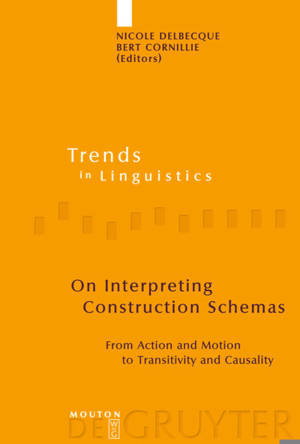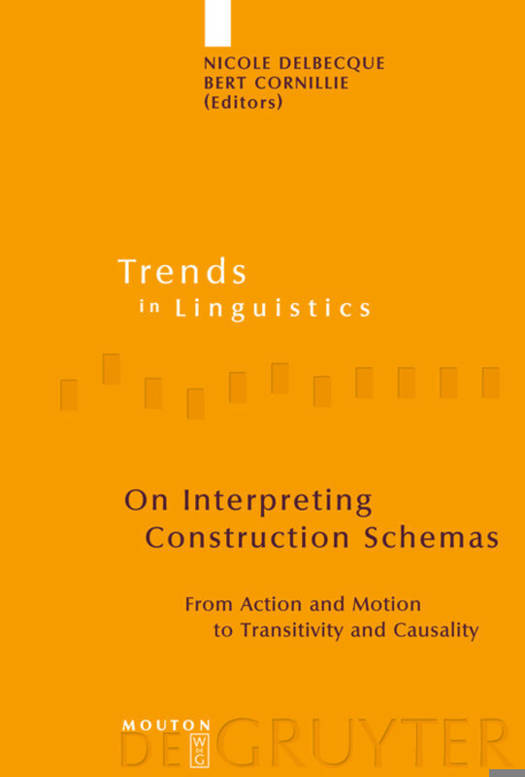
- Afhalen na 1 uur in een winkel met voorraad
- Gratis thuislevering in België vanaf € 30
- Ruim aanbod met 7 miljoen producten
- Afhalen na 1 uur in een winkel met voorraad
- Gratis thuislevering in België vanaf € 30
- Ruim aanbod met 7 miljoen producten
On Interpreting Construction Schemas
From Action and Motion to Transitivity and Causality
Omschrijving
This volume addresses the constructional variability with transitive and causative verbs from the point of view of their respective action and motion patterns. Drawing on the theoretical advances registered in cognitive approaches to language (Cognitive Grammar, Construction Grammar and space semantics), the papers substantiate new interpretations and adduce empirical evidence from various languages to refine or adjust existing analyses of transitivity and causation.
The different contributions all address the crucial question of how concrete and abstract notions of human behavior drive linguistic expressions. Cognitive linguists consider that linguistic competence functions in terms of complex conceptual units: the native speaker knows and manipulates conceptual blocks without paying further attention to their constitutive parts or their internal organization. However, as this volume illustrates, the role of the constitutive parts and their internal organization cannot simply be reduced to zero. A multidimensional approach to construction schemas is at stake. That is, the speaker applies proper embodied subroutines to build a coherent meaning, but the construction schemas are also rooted in the linguistic patterns the speaker and hearer are familiar with.
The volume is primarily intended for scholars working within cognitive-semantic research at large. Given its theoretical and applied character (in the sense of giving empirical evidence for specific problems in the grammar), the volume will also be of great interest to anyone concerned with syntactic processes, construction grammar or with the cognitive structure of discourse. The descriptive and theoretical insights indeed dwell on areas that are currently dealt with in modern linguistics.
Specificaties
Betrokkenen
- Uitgeverij:
Inhoud
- Aantal bladzijden:
- 378
- Taal:
- Engels
- Reeks:
- Reeksnummer:
- nr. 198
Eigenschappen
- Productcode (EAN):
- 9783110198652
- Verschijningsdatum:
- 19/12/2007
- Uitvoering:
- Hardcover
- Formaat:
- Genaaid
- Afmetingen:
- 156 mm x 234 mm
- Gewicht:
- 707 g

Alleen bij Standaard Boekhandel
Beoordelingen
We publiceren alleen reviews die voldoen aan de voorwaarden voor reviews. Bekijk onze voorwaarden voor reviews.










